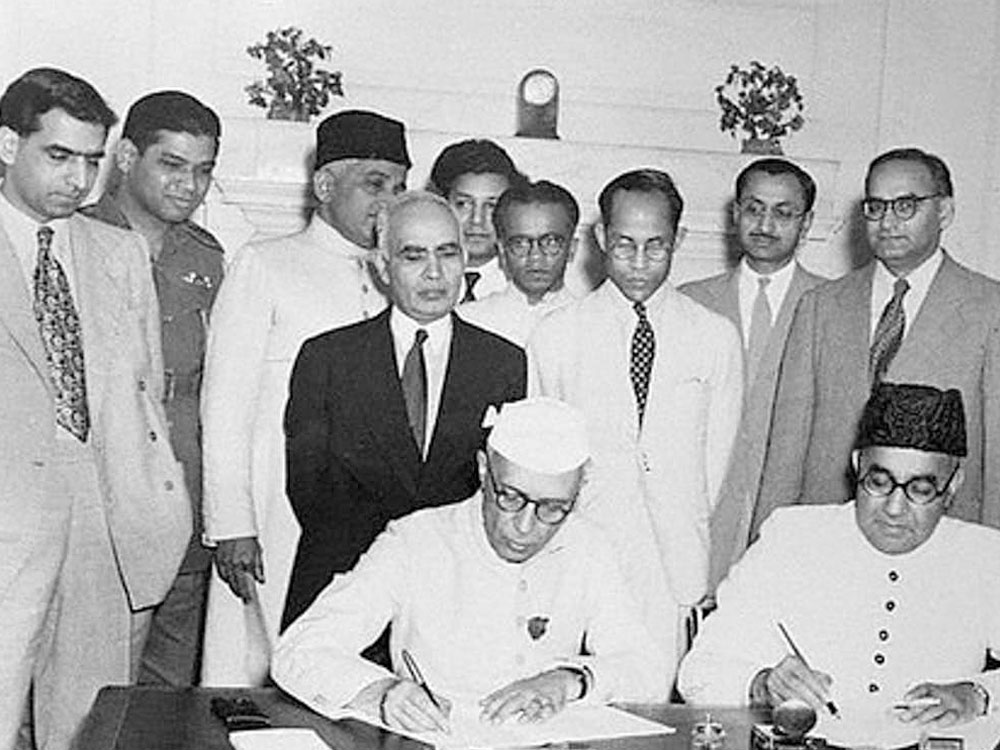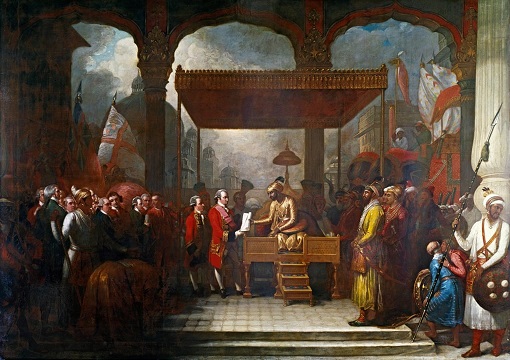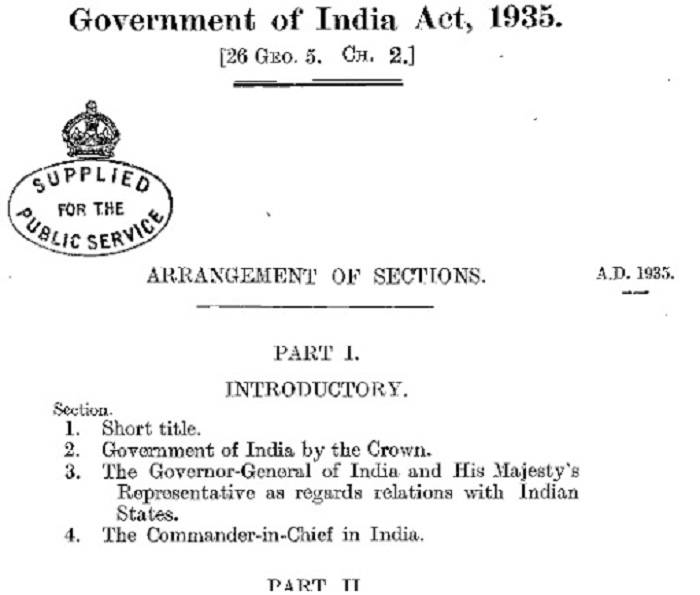Constitutionalism of the nationalist politics during colonial India undoubtedly shaped independent India’s constitution. The colonial laws enacted during the days of East India Company and subsequent legislation made by the British East India government acquainted the Indians with modern law-making processes. The reformers who laid the foundation for a nationalist resurgence in India began to expect the British government to bring in legislation that was to help Indians gain universal elementary education and fair participation in the administration. The ideas of equality and participatory democracy had left a deeper influence on the Indian leaders.
The newly educated Indians who constituted a class of literate Indians had shown significant appreciation for liberal values like rule of law, the concept of rights, equality, justice, secularism, and self-rule. The works of early reformers who advocated for social transformation enabled the colonial British to intervene in the cultural and religious affairs of India. The enactment of laws banning the Sati system, in 1829, and allowing widow re-marriage, in 1856, was the early legislations that were upheld by the nationalists.
The nationalists, however, were also critical of colonial legislation under the garb of Indian Penal Codes that restricted freedom of speech, press, and suppression of mass movements in India. Constitutionalism of the nationalist politics during colonial India undoubtedly shaped independent India’s constitution.
Law Making in Colonial India
The year 1765 marked a turning point as the East India Company acquired Diwani – a law that gave the rights over revenue and civil justice in India. For the first time, the Company obtained revenue collection power in Bengal, Bihar, and Orissa. The Regulating Act, 1773 defined the political functions of the company, the three Presidencies – Bengal, Bombay, and Madras, were made independent of each other, and a Supreme Court at Calcutta was established.
Under the provisions of the Pitt’s India Act, 1784 the territories of the companies were for the first time defined as ‘British possessions in India’. The Charter Act, of 1833 ended the Company’s commercial role and was reduced to a mere administrative body. The early reformers who were acquainted with English education began to demand the inclusion of Indians in the British administration.
The legislation of 1833 was in favor of making the recruitment system open but only to be rejected by the Court of Directors. A couple of years before the Sepoy mutiny, the Charter Act of 1853 separated the legislative and executive power of the Governor-General’s council. A central legislative council was created which functioned as a mini-Parliament in India for the first time. The Charter of 1853 introduced open competition of civil services leading to the constitution of the Macaulay Committee on Civil Services. In the Governor General’s Council, four members were to be appointed by Madras, Bombay, Bengal, and Agra.
Another legislation that laid the foundation for constitutionalism in India was the Government of India Act, 1858 which was defended as Act for the Good Government in India. The Governor-General of India was redesignated as the Viceroy of India and an office of Secretary of State was created to handle India’s administration after the abolition of the East India Company’s rule in India.
The 1861 Act provided for the nomination of Indians as non-official members and decentralization in the legislative processes. The Act introduced a portfolio system as it entrusted the Council’s members to handle administrative departments. The concept of an ordinance system with six months validity and emergency lawmaking was introduced for the first time. The Viceroy was empowered to issue such an ordinance. The 1892 Act introduced a limited provision for elections of members.
Indians number of Indians’ participation in the Central Legislative Council was increased from 16 to 60 under the provisions of the Indian Council Act, 1909. Satyendra Prasad Sinha became the first Indian to be included in the Viceroy’s Executive Council. The 1909 Act was opposed by the Indian National Congress as it legalized a separate representation system for Muslims in India. The Act of 1919 introduced a bicameral legislature with more provision for direct elections in India. A limited system of the franchise was introduced while it also extended a separate electoral system to Sikhs, Indian Christians, Europeans, and Anglo-Indians.
The Nationalist Constitutionalism
Constitutionalism as a method was adopted by the moderates. In the words of Bipan Chandra, even the Gandhian phase of nationalism was dependent on struggles and truce. There was negotiation on constitutional arrangement and democratization of colonial legislation. Nationalist response to the Indian Council Act, 1919, and Rawlatt Act, 1919 were some significant cases. The introduction of modern institutions like rule of law, judiciary, civil services, and representative bodies conditioned Indians to gradually believe in British constitutional values. The early reformers went on to perceive colonial rule as good for Indians for various reasons. Some of the important factors for opting constitutional method can be discussed below.
The first generation of reformers and nationalists were immensely influenced by liberal values. Since most of them were English educated, there was a greater appreciation for the English parliamentary system and rule of law. Early reformers like M.G. Ranade, Dadabhai Naoroji, and Surendranath Banerjee appreciated the British rule for acquainting the Indians with rule of law, sense of justice, and modern values. The reformers believed in constitutionalism as a mechanism to eradicate evil traditions. Constitutionalism of the nationalists for long avoided direct political actions, resistance, non-cooperation, boycott, civil disobedience, and violence.
A New Dimension of Nationalist Articulation
After the split of Congress in 1905, constitutional methods were often criticized. Bal Gangadhar Tilak considered it a ‘political suicide’ while Aurobindo Ghosh termed constitutionalism as ‘intellectual bankruptcy of the leaders.’ As a result, there began boycotting and swadeshi movement. Towards the second decade of the 20th century, the nationalist movement began to swing between active resistance and constitutional negotiations. The introduction of communal representation in 1909 and a further extension in 1919 was the major point of the contest. Resistance was building up against the draconian Rawlatt Act, 1919, and Simon Commission, 1929.

The Indian National Congress was against the federal proposal and extension of the communal electoral system as recommended by the Simon Commission, 1929. The Nehru report, 1928, came as a response to the colonial incapacitation of Indians to frame a constitution of their own. An All-Parties Conference, 1928 presided over by Dr. M. A. Ansari appointed a sub-committee chaired by Motilal Nehru to work out a constitutional system in India.
The recommendations of Nehru’s report gave way to two important constitutional schemes in India – dominion status and complete independence. Nehru’s report supported electoral reservation for Muslims at the Centre and in provinces but not in the constituencies where they were in majority. Motilal Nehru emphasized the need for a proper definition of citizenship, provision of fundamental rights, universal adult suffrage, equality, etc. The Muslim nationalism represented by Muslim League proposed four significant schemes to be incorporated in the draft constitution. The proposal came to be known as the ‘Delhi Proposals’, 1927.
The proposals included separate electorates with reserved seats for Muslims; one-third representation to Muslims in Central Legislative Assembly; Representation to Muslims in Punjab and Bengal in proportion to their population, and to form three new Muslim majority provinces — Sindh, Baluchistan, and North-West Frontier Province. The proposals of the Muslim League were not acceptable to the majority of the Congress leaders and the right-wing Hindu nationalist represented by the Hindu Mahasabha. The Lahore declaration of 1929 for Poorna Swaraj – complete independence – took nationalist politics to a higher level. In 1992, Mahatma Gandhi had argued that Swaraj was not to be a ‘free gift of British’.
The Government of India Act of 1935 was another advancement towards a responsible government in India. 1935 contained 321 sections and 10 schedules with provisions for an All-India Federation. Three subjects were created including a federal list with 59 items, a Provincial list with 54 items, and a Concurrent list with 36 items. An interesting aspect of the 1935 Act was the reservation of Residuary power with the Viceroy’s council. The Act founded a Federal Court. Congress decried the Government of India Act, 1935 as a ‘slave constitution that attempted to strengthen and perpetuate the economic bondage of India’. Jawaharlal Nehru compared the Act with ‘driving a car with all breaks but with no engine.’
Mohammad Ali Jinnah termed the Act ‘rotten, fundamentally bad and totally unacceptable.’ Despite the conflicting response to the Act of 1935, D.D. Basu considers that 75% of India’s independent Constitution was derived from the 1935 Act. Indian nationalists were now involved in designing a constitutional future. Jawaharlal Nehru was in favor of Parliamentary democracy while M.K. Gandhi was for local self-government institutions. Patel and Ambedkar were in favor of a stronger central government. K.M. Munshi, on the other hand, supported a uniform civil code.
India’s freedom in 1947 was more of a ‘transfer of power’ according to Bipan Chandra. Introduction of Governorship, Indian Penal Code system, social regulation laws, nomination of Indians in the colonial administration, federal power-sharing, representation, judiciary, bureaucracy, police, and reservation system were modeled on British Parliamentary system. As the nationalist movement escalated, the Cabinet Mission Plan, 1946, suggested a Constituent Assembly.

The Indian Nationalist Congress rejected the Cabinet Mission Plan as it wanted a strong center and did not like the idea of a grouping of provinces on religious grounds. The Congress, however, took part in the Assembly while the Muslim League did not. As the Congress joined Viceroy’s interim council, an interim government was constituted under the leadership of Nehru. On 9 December 1946, the Constituent Assembly met for the first time. Independent India’s Constitution was adopted on 26th January 1949. There was a significant dominance of the Congress party in the constitution-making of India.
In the words of Granville Austin, it was one party assembly as ‘Congress was India and India was Congress.’ Austin, however, credits the Indian constitution as a cornerstone and a consensus document that brought a social revolution in India.



1 thought on “Nationalist Constitutionalism in India”